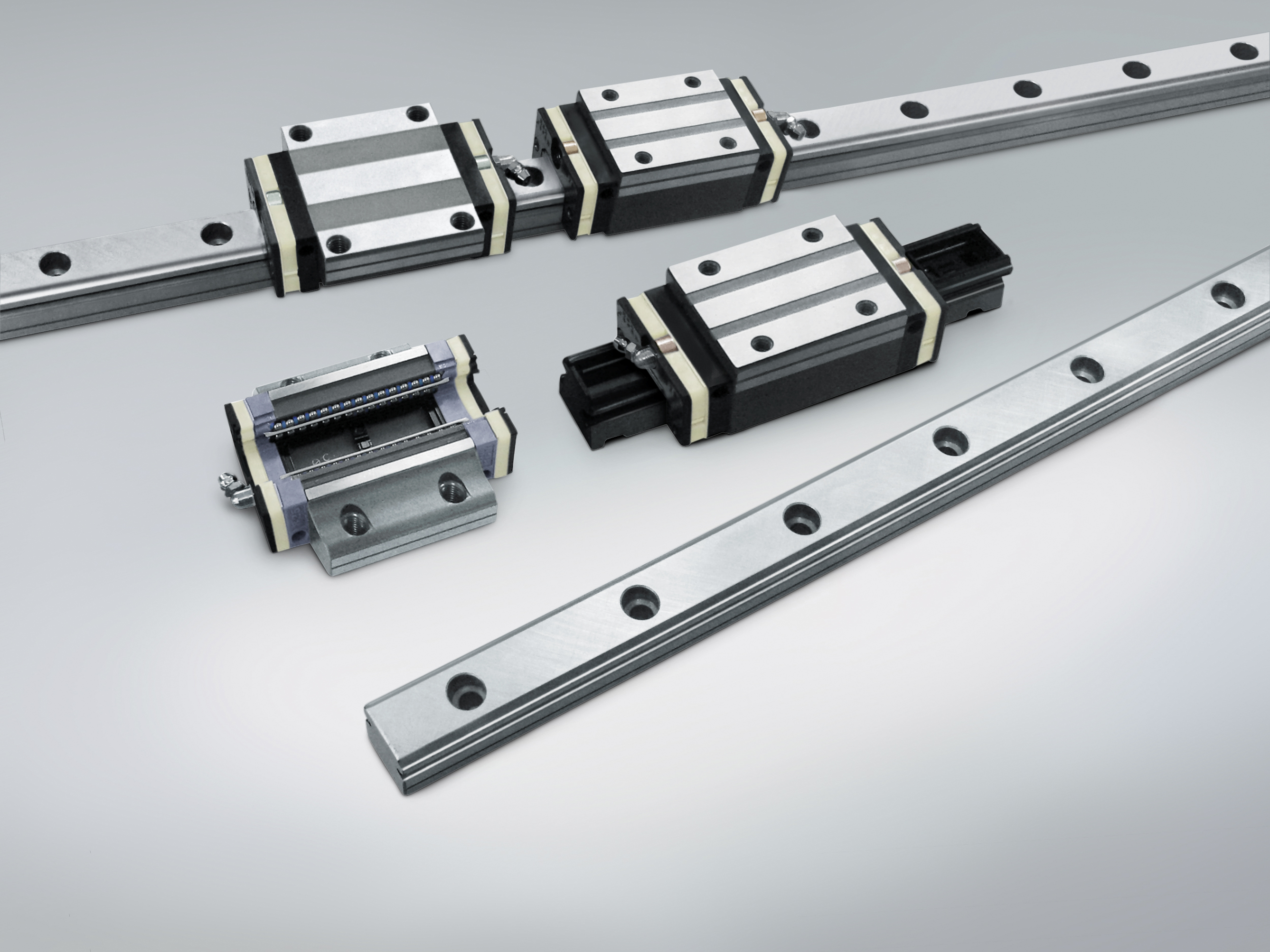
 There are many ways that linear motion components can break down and degrade if not maintained properly.
There are many ways that linear motion components can break down and degrade if not maintained properly.
Radial bearings tend to make more noise when malfunctioning because of their rapid rotation, but linear bearings tend to be much quieter and require more monitoring.
Variables such as load, orientation, speed, travel, precision, environment, and duty cycle can all affect the working life of linear motion components. Extreme heat or cold can also dictate the type of lubrication used in linear bearings; choosing the wrong one can cause breakdowns.
Troubleshooting Guide for the Most Common Issues
Flaking is when linear guides approach or reach their rolling fatigue life, and scaly particles flake away from the surface of the raceways and balls. Reasons for this happening could be the natural life of a linear guide; improper assembly or misalignment; poor flatness of the mounting surface; insufficient or improper lubricant; or intrusion of foreign matter or water.
If flaking is noticed, there are a few steps to repair the issue. Improving flatness of the mounting surface or accuracy of the assembly could offer a solution. If lubrication is the culprit, switching to a better method or a more suitable lubricant may resolve the issue. If there is any contamination, review the protective covers and/or enhance the sealing capability of the linear guide.
Wear and tear on rolling contact surface or balls can result from severe friction, and is generally a result of insufficient lubrication, improper installation, or intrusion of foreign matter. If misalignment isn’t a factor, checking the sealing capability and lubricant is the best option.
 Fretting corrosion is specific types of wear resulting from repeated rubbing between contacting surfaces. It is almost certainly caused by completely dried out lubricant on the contacting area because of minute amplitude oscillation. Use anti-fretting grease and distribute the lubricant over the contact surfaces by longer stroke motions in certain frequencies (i.e., once every 5,000 cycles).
Fretting corrosion is specific types of wear resulting from repeated rubbing between contacting surfaces. It is almost certainly caused by completely dried out lubricant on the contacting area because of minute amplitude oscillation. Use anti-fretting grease and distribute the lubricant over the contact surfaces by longer stroke motions in certain frequencies (i.e., once every 5,000 cycles).
Indentations occur on the raceway at each ball location similar to deformation caused by a Brinell Hardness Test. High-energy impacts or improper handling of the product at its installation or in transit will easily cause this sort of damage. General dents on the raceway could be caused by contamination or intruded metallic particles. If this is suspected, improved sealing and filtering of lubrication oil is advisable.
Electrolytic corrosion presents in pit-like spot corrosion on balls and raceways. This is caused by an electric current, creating sparks through a thin oil film, between contact points of raceways and balls while a linear guide was in operation (electric potential difference between a rail and a ball slide). An effective countermeasure would be to provide an electric circuit so that the current doesn’t pass through the linear guides.
Corrosion can be noticed on raceways and balls. It can be a result of water or corrosive substance intrusion, inadequate lubrication, or improper storage. Review sealing function and lubrication system, as well as storing condition. It might make sense to cage to a higher anti-acid material or better surface treatment.
 Damaged ball recirculation parts occur when balls become free from the ball slide due to broken plastic ball recirculation parts. It may be caused by abnormal wear caused by lubrication failure and intruded particles. If this is the case, review the lubrication system, and improve the sealing function.
Damaged ball recirculation parts occur when balls become free from the ball slide due to broken plastic ball recirculation parts. It may be caused by abnormal wear caused by lubrication failure and intruded particles. If this is the case, review the lubrication system, and improve the sealing function.
In case of butting rail specification, a ball recirculation part collided with the rail at the rail butting position because of excessive misalignment of rails in lateral and vertical directions. This can be resolved by improving the butting accuracy (lateral and vertical aligning accuracy at butting position). Another cause could be the feed speed rate exceeding the permissible speed, in which case reviewing the feed and looking at adding a high-speed end cap on the linear guide can help.
While troubleshooting will resolve a problem short term, sometimes the root of a problem starts from careless handling, excessive misalignment, insufficient lubrication or contamination, or a combination of those. It is possible to prevent the recurrence of the problem by undertaking a thorough investigation into its installation, handling, maintenance history, and any history about the progress of the problem.
—————–
Jim Elekonich is a Senior Applications Engineer with 20 years of experience in the bearing industry with NSK, specializing in machine tool spindle bearings and linear motion products.

